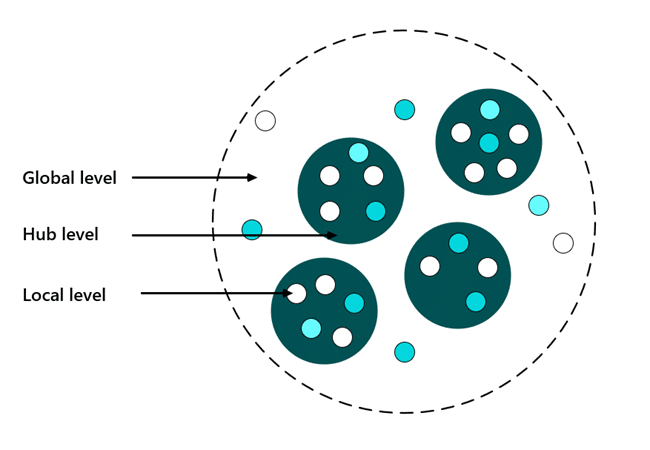

In the modern workplace, it is crucial to have the right tools for collaboration and information management. Microsoft Teams and SharePoint are two powerful platforms that can help streamline these processes while ensuring consistent application of your company’s branding. This blog will dive into how these tools work together to create an efficient information management system. We’ll look at the key aspects of SharePoint’s information architecture and outline some best practices for getting the most out of both Teams and SharePoint.
Information architecture in SharePoint is about organising and labelling content so that your users can efficiently find and interact with it.
| Aspect | Classic SharePoint Architecture | Modern SharePoint Architecture |
| Structure | Classic SharePoint used a hierarchical system with site collections and subsites, which included inherited navigation and permissions. | Modern SharePoint promotes a flat architecture where each site operates as a standalone site collection, simplifying management and enhancing flexibility in navigation and permissions. |
| Flexibility | While functional, the hierarchical structure of Classic SharePoint often became inflexible and difficult to maintain, especially as organisations grew and evolved. | Modern SharePoint’s flat architecture is more flexible, and it is much easier to manage and reorganise content without the need for complex migrations. |
| Design Approach | Classic SharePoint was designed around a hierarchical system, which could become cumbersome and rigid over time. | Modern SharePoint sites are designed for specific topics or tasks, using a modular approach that enhances adaptability and scalability. |

Global Navigation: Global Navigation: Provides a unified navigation story across the intranet, connecting all sites, content, and tools needed for users to perform their tasks. Enabled through the SharePoint app bar on the home site, it appears on every page, ensuring consistent access to major content areas and incorporating your company’s logo and branding elements throughout the organisation.
Hub Sites: Connect related sites based on department, project, or region, providing common navigation, branding, and search capabilities across associated sites. Each hub is managed by a hub owner and supports flexible site reorganisation.
Local Navigation: Offers static navigation within individual sites, tailored to support content exploration. In team sites, this navigation appears on the left; in communication sites, it appears at the top.
Teams as a Collaborative Hub – Microsoft Teams serves as a central platform for communication and collaboration. Each team is backed by a SharePoint site for file management, integrating seamlessly with other Microsoft 365 apps.
Enhanced Collaboration – Persistent chat, productivity tabs, and integrated file management in Teams reduce the need for disjointed emails and streamline access to necessary resources.
File Management – Files shared within Teams are stored in the corresponding SharePoint site, ensuring organisation and easy access.
Tabs for Productivity – Tabs in Teams channels allow integration of tools like Planner, Stream, and other resources directly within Teams, minimising the need to switch between applications.
Viva Engage – Provides an easy way to access your organisation’s intranet within Teams, ensuring users have seamless access to company-wide resources and updates.
Transforming your SharePoint and Teams architecture is about adopting a strategic, user-centric approach. By shifting to a flat, modular structure, you can enhance flexibility and streamline management, making your system more scalable and adaptable.
Spanish Point has been at the forefront of SharePoint technology since 2005. With extensive experience in delivering excellent SharePoint solutions, we have the knowledge and expertise to ensure your SharePoint project is a success. Our detailed planning and coordination with your users will enable us to create custom solutions tailored to your company’s needs quickly and cost-effectively. Additionally, our dedicated UX/UI team will help ensure that your branding is consistently applied across all sites, enhancing your organisational identity.
Trust Spanish Point to be your partner in achieving SharePoint success.

Ready to modernise your SharePoint and Teams architecture? Contact Spanish Point today to get started on creating a solution specific to your needs.